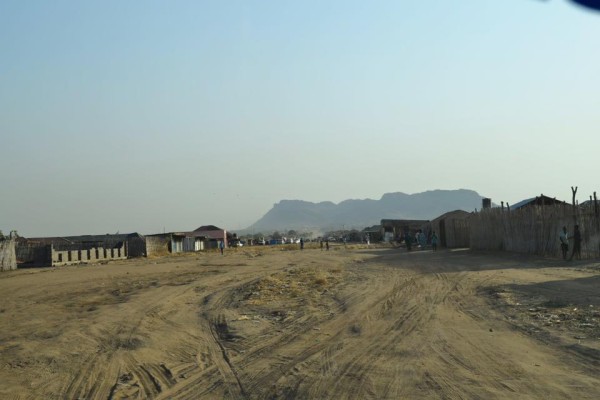 Dr. Al Colver sent me this picture from the Sudan. I saw that distant mountain and immediately wished I could go over there and climb it. I imagine that when Collver comes back he will talk about a mountaintop experience.
Dr. Al Colver sent me this picture from the Sudan. I saw that distant mountain and immediately wished I could go over there and climb it. I imagine that when Collver comes back he will talk about a mountaintop experience.
Transfiguration Sunday just celebrated really marks the beginning of Lent, Peter, James, John, Jesus, Moses and Elijah on a mountain and Jesus shows His glory as the two Old Testament prophets talk with Jesus about His “exodus”. Peter makes the interesting statement that they should build booths and stay because it is good to be there. It was a neat experience, after some fear, – lovely – amiable.
When Moses climbed the holy mountain to receive directions for the building of the tabernacle of God’s presence in Israel, “the sight of the glory of the lord was like devouring fire on the top of the mount in the eyes of the children of Israel” (Ex. 24: 17). There was even the stern warning: “Who ever touches the mount shall be surely put to death” (Exodus 19: 12) . How dramatically this tells us that fallen and rebellious man cannot approach God or stand in His presence. To come into the presence of the Lord of Hosts as we are is not an amiable mountaintop experience; it spells death and destruction for the sinner. Elijah in his day on earth he was given a mountaintop experience. On Mount Carmel he witnessed the devouring fire of God descend from heaven. He was the instrument of the justice of God upon those who had defiled themselves. Israel learned that the Lord of hosts demands full accord with the requirements of His holiness. He accepts no divided loyalty, no “limping on two sides”. We are not surprised therefore when we are told that the three disciples on the Mount of Transfiguration were afraid, as all sinful men must be in the presence of the lord of hosts. And yet the psalmist says: “How amiable are Thy tabernacles, 0 lord of hosts.” Jesus took Peter, James, and John up a high mountain, and they can say: “It is good to be here.” How is this possible?
Because “the Word was made flesh and tabernacled among us, and we beheld His glory, the glory of the Only-Begotten of the Father, full of grace and truth.” In the Word made flesh, in this Jesus of Nazareth, made of a woman, God whom the heavens and the heavens of heavens cannot contain had come to be with men; in Him dwelt all the fullness of the Godhead bodily, not in a cloud but in Christ Jesus, the God-man. In Him is forgiveness and life and where ever He is it is good to be. In Word and Sacrament He is here. In the gathered church He is here. In the fervent prayer He is here and it is an amiable, lovely place.
(This is a treatment of a study on Tabernacles by Walter Roehers found in CTM January 1964.)

